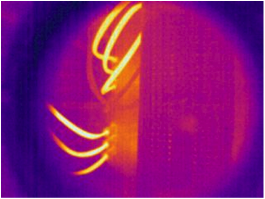Save Time & Money with IR Windows
 In today’s budget conscious environment, facility managers are forced to justify every expense in a facility maintenance budget, and often operate maintenance programs with less money than last year. Below are 3 ways IR Windows may help save your facility time and money:
In today’s budget conscious environment, facility managers are forced to justify every expense in a facility maintenance budget, and often operate maintenance programs with less money than last year. Below are 3 ways IR Windows may help save your facility time and money:
1. Safety & Standards Compliance: The presence of IR Windows enables equipment to be in an enclosed, guarded condition, reducing potential electrical hazards during inspection. The non-intrusive inspection (keeping panel doors closed) does not elevate the risk of electrocution or of triggering an arc flash incident; therefore, elevated levels of PPE may not be required when using an IR Window.
2. Risk Management: The Hierarchy of Control requires engineers and managers to eliminate risk where possible (as opposed to relying on engineering controls or PPE to protect personnel after the accident happens). Use of IR Windows eliminates the high-risk situations involved with open-panel inspection and replaces them with a non-intrusive work process.
3. Cost Savings/Efficiency: Time studies have shown that the installation of IR Windows can reduce the time required to inspect a piece of equipment by 90%. And … time is money.
With your phone call to Jersey Infrared Consultants, your facility can start a program now that will save time & money for years to come.